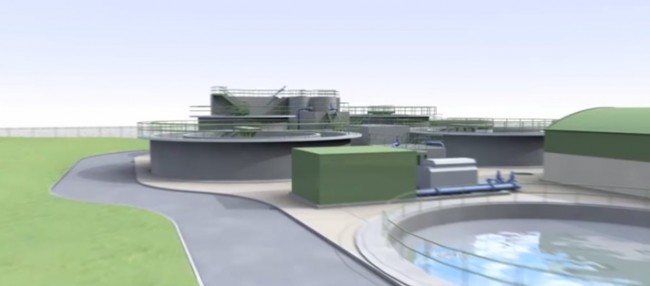3D Scanning could help remodel the Process Industry
Remodelling a plant with precision accuracy can be a laborious old process. Measurements and drawings take time and any hint of inaccuracy can lead to costly delays or even shelving those ambitious plans altogether. So could 3D scanning provide the answers?
How does 3D scanning work?
It's predominantly tripod based rotating scanners with a camera that are used for this sort of application. Phase shift measures the distance between points from the scanner location and hundreds of thousands of measurement points per second are captured in a full 360 degree data sequence, which results in a complete sphere pattern of dot positions.
“Once multiple scans for a single area are complete, post-processing stitches together millions of data elements into a 'point cloud,' according to Reliabilityweb.com. “The process is then repeated for other factory areas with post-processing joining individual point clouds together to create a 'project point cloud' of the entire site.”
What results is an accurate 3D 'walk through' of the 'as installed' plant. This is measured to an accuracy of up to 2mm and allows for dimension and annotations to be added to any three dimensional element. It also opens the door to reverse engineer assets and components.
Typical applications for 3D scanning

There are many uses for 3D scanning that could be considered for factory use. Here are just a few pertinent examples:
Import to 3D CAD
“The 3D scan to CAD process is 12 times faster compared to manual measurement with much higher accuracy rates,” say Reliabilityweb.com. “The point clouds are imported into software that sections the point cloud and uses the points to create a geometric configuration, a bit like tracing in 3D.” Kiss goodbye to rulers and paper in that case!
Supplier Review
If your plant modifications demand restricted access and tight deadlines then potential suppliers can gain secure web access to a limited area of the plant from their location. The ability to walk-through and dimension simultaneously means more suppliers can be engaged, which streamlines the quotation period.
Reverse Engineering
You can use 3D scanning to quickly digitize any part and create a fully surfaced CAD model to reproduce a local copy. With just a few more scans even large and complicated parts can be tackled.
Plant Reviews
For an initial check or quick safety review, a 3D walk-through is a great way to quickly review plant layouts. “The ability to dimension also means that initial assessments can be made to see if the new kit could possibly fit in that position,” say Reliabilityweb.com.

Asset Register
A 3D scan won't register serial numbers for you but it can speed up the equipment identification process. “Database links can be made in both directions with the 3D scan point cloud able to load an asset register and the asset register, in turn, able to load the 3D scan point,” according to Reliabilityweb.com. “There is no reason why the process cannot be part of maintenance checks with the inspection content linked to, and taking the engineering to, a precise location in the 3D scan point cloud for a physical review.”
Incident Investigation
If data can be recorded for office-based analysis of forensic crash investigations then imagine that technology applied to industrial incidents. There's definite potential.
It's clearer than ever that 3D scanning can play a pivotal role in the modern day plant. It's a powerful medium that looks set to revolutionise the way the Process Industry operates for many years to come. For more information on this topic visit Reliabilityweb.com.
Get the latest process industry news
Interested in receiving even more industry-leading news from Process Industry Forum delivered directly to your inbox? Then sign up to our free newsletter. Bringing you the latest news, trends, innovations and opinion from across the process industry, our exclusive newsletter gives you all the industry insights of the moment in one, easy-to-digest bulletin. Stay ahead of the competition with regular process industry news instalments from PIF.
